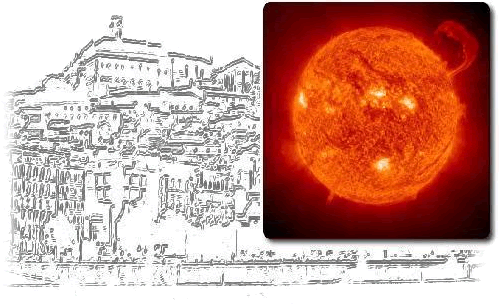|
|
|
|
|
|
|
|
|
|
|
|
|
Andrey Tlatov, Mr. - PhD |
|
Kislovodsk Mountain Astronomical Station, Main Astronomical Observatory of Russian Academy of Sciences, Kislovodsk, Russia |
|
* |
|
|
|
|
|
Session 4 - Speaker |
|
Tilt angles of solar filaments over the century: 1919-2014 |
|
A.Tlatov, K. Kuzanyan, V. Vasilyeva, Kislovodsk Mountain Astronomical Station, Main Astronomical Observatory of Russian Academy of Sciences |
|
|
|
We study the distribution of solar filaments using the data from Meudon
Observatory 1919-2003 together with Kislovodsk Mountain Astronomical Station
1979-2014. We scanned and digitized the observed H-alpha synoptic maps line, on
which we isolated and digitized filament locations. We also carried out the
digitization of filaments form daily observations of solar activity in 1965-2014.
Data on each filament contain information of the location, length, area, position
and other geometric characteristics. We obtained the distributions of the number and
the length of filaments with time as well as their latitudinal drift with solar
cycle. We also analyzed of the longitudinal distribution, the asymmetry over the
northern and southern hemispheres and other characteristics.
We analyzed the tilt angles to the equator. On average, the Eastern ends of the
filaments are closer to the poles than Western ones by some 10 degrees in latitude,
that we prescribed positive tilts. To the contrary, in the sub-polar regions with
latitudes greater than 50 degrees the filament tilt angles are mainly negative. The
portion of filaments in the middle-latitude is not large (less than 30%).
The tilt angles vary with the phase of solar cycle attaining theory maximum at
maximum sunspot activity phase. The highest values for low-latitudinal filaments
(below 40 degrees from the equator) have been attained in the middle of 20th century
in solar cycles 18-19 at the time of maximum activity.
We therefore propose using statistical properties of solar filaments as an
additional coherent measure for manifestation of the solar cycle which covers all
latitudes and has a systematic calibrated almost a century long available data
series. |
|
|
|
|
|
|
|




 









 |



